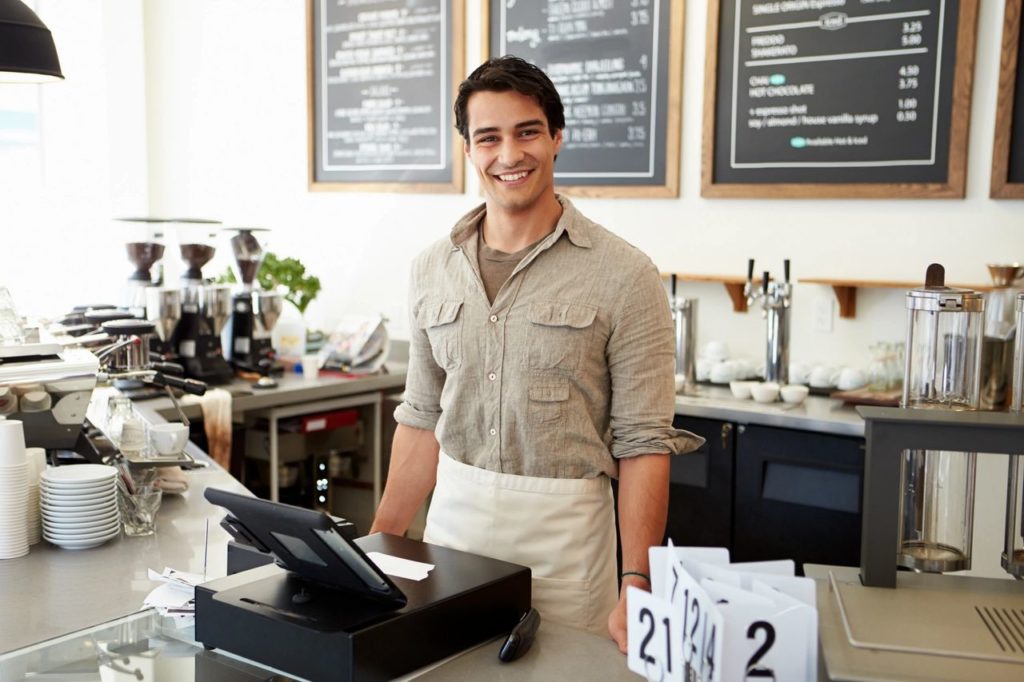The number of transactions that take place between merchants and customers in a single day is mind-boggling. The United States alone processes over 108 million card transactions daily – and receipts help us keep track of them all.
Consumers and businesses need proof-of-purchase for recordkeeping, reimbursement, and returns. Usually, this information is provided via paper receipt. But e-receipt technology is readily increasing its market share as a convenient, environmentally-friendly alternative.
What’s an e-receipt
An electronic receipt, or e-receipt, is a transaction record issued via email, text message, or digital app instead of a physical receipt. And for businesses that want to reduce their carbon footprint, improve efficiency, or cut operational costs, they’re not to be overlooked.
8 Reasons it’s Time to Switch to E-Receipts:
1. E-Receipts Benefit Your Bottom Line
It costs between five and ten cents on average to print a paper receipt. While that may seem like a negligible expense, it adds up. Retailers in the United States spent over $312 million on paper receipts in 2019. And, thanks to a shortage of leuco dye used in the printing process, that number is expected to rise through 2025.
E-receipts save businesses money by preventing paper waste, reducing leuco dye usage, and allowing merchants to track transactions virtually instead of printing duplicates.
2. E-Receipts Provide Better Customer Metrics
Customer metrics help you understand the type of people who engage with your business. But market research can be expensive and time-consuming, and customer surveys are often more of a headache than they’re worth. Independent e-receipt apps like e.pop use digital data to provide anonymous, dynamic customer metrics across all their spending not just with you – opening up a new marketing channel beyond your existing one that embraces sustainability.
Direct Offers Drive Top-Line Sales
Businesses can engage with new and existing customers right on e.pop , without requesting personal information. Deliver exclusive targeted offers based on your customers’ demographics and purchasing history to build trust, brand awareness and, ultimately, drive sales.
Global health and wellness retailer GNC uses digital receipts to feature product recommendations based on previous purchases. The company recently reported it drew 7% of sales from an e-receipt upsell campaign and increased its loyalty program upgrades by tenfold.
3. E-Receipts Boost Brand Loyalty
Studies show over 75% of consumers are looking for companies to help simplify their lives, and are equally partial to environmentally-responsible brands. E-Receipts meet both preferences by providing a sustainable, efficient transaction experience.
Stand Out at Check Out
E-receipts are easier to keep track of than paper receipts and can’t be damaged by physical wear-and-tear. That’s one reason the vast majority of consumers want businesses to offer e-receipts. Still, most companies haven’t embraced digital alternatives. Get ahead of the curve to stand out.
Both Apple and Nordstrom have seized the opportunity to utilize digital proof-of-purchase in-store. Each store equips all floor associates with mobile payment terminals that send e-receipts and print paper receipts if needed. This means customers can get checked out by the nearest employee (instead of getting impatient in line).
Share Your Sustainability Stats
e.pop is collaborating with partners to generate environmental impact stats for merchants and consumers. Soon, businesses will be able to share how much paper they’ve saved and emissions they’ve prevented by switching to e-receipts.
Backing your sustainability story with facts and figures builds trust with new and existing customers. Take CVS, for example: in 2019, the company reported over one million new customer signups after promoting its new digital receipt program (which saved enough paper to circle the entire globe!).
4. E-Receipts are More Sustainable
Consumers are becoming increasingly concerned about the global climate crisis. Nearly 80% indicate sustainability is important to them, and over half are willing to change their purchasing habits to reduce their impact on the environment.
Global business practices are changing to meet consumer values. Since 2014, sustainable and environmentally responsible investment has risen 68%. Initiatives aimed at achieving carbon neutrality – like ditching single-use plastic, switching to green energy, and planting trees – are taking center stage.
But paper receipts are “slipping” through the cracks.
Worldwide, we consume an estimated 25 million trees each year to produce over 400,000 metric tons of paper receipts. Once they’re cut down, these trees can no longer absorb CO2 from the atmosphere.
Deforestation isn’t the only problem. The US alone uses over 250 million gallons of oil and one billion gallons of water each year to make paper receipts – generating a whopping 1.5 billion pounds of waste.
Thermal Receipts Can’t be Recycled
The chemical coating on most receipts is toxic to the environment and nearly impossible to remove, meaning they can’t be recycled. Unfortunately, customers have no other option than to throw unwanted receipts in the trash.
As companies worldwide continue to pursue carbon neutrality, e-receipts are an easy way to eliminate the hidden footprint of paper proof-of-purchase.
5. Contactless Pay is Here to Stay
Consumer purchasing habits changed drastically in 2020. Nearly three-quarters of global consumers have tried a new shopping or payment method in the last year – including 26% who used contactless in-store payment methods.
Even once a COVID-19 vaccine is more widely available, 74% of consumers expect to continue to prefer contactless payment. E-receipts are an easy way to reduce shopper/cashier contact, providing peace of mind and keeping everyone in your business safer.
Woolworths, Australia’s largest supermarket chain, recently integrated a digital receipt option into its customer rewards app. Shoppers can opt to receive e-receipts automatically with every purchase, speeding up the checkout process and reducing contact with the payment terminal. E-receipt apps like e.pop are a low-cost way for merchants to streamline contactless experiences without developing apps of their own.
6. E-Receipt Apps are Confidential and Secure
Email and text messages are two common ways merchants provide e-receipts. But with regular news of data breaches in major companies like Macy’s, HyVee, and Marriott Hotels, customers can be reluctant to share their personal information. They may also be concerned about the risk of fraud from contactless payment.
e.pop connects merchants with customers over a single, secure app – no email or phone number exchange necessary. Instead of sharing their information with numerous retailers, customers store theirs in one secure location, reducing the risk their data will be compromised.
Customers can view their spending across accounts and receive instant notifications every time a transaction is processed. This enables real-time monitoring of spending, easing anxiety about fraudulent activity for merchants and customers alike.
7. Paper Receipts Contain Harmful Chemicals
Nearly 90% of paper receipts are coated in bisphenol-A (BPA) or bisphenol-S (BPS). These chemicals react with printer heat to make purchase information appear on thermal paper, keeping receipts legible longer than ink.
Unfortunately, BPA and BPS are linked to numerous health concerns, including type II diabetes, thyroid issues, and reproductive and fetal development risks. While both chemicals are banned from numerous consumer goods, over 80% of Americans have detectable levels of BPS in their urine.
Most Exposure Comes from Paper Receipts
Thermal receipts dusted with BPA & BPS transfer the chemicals to our hands when we touch them. Studies show the total mass of BPA on a receipt is 250 to 1,000 times greater than on a standard plastic bottle. That’s one of the reasons upwards of 90% of BPS exposure is linked to paper receipts.
Retail Staff are at Greater Risk
Your employees keep your business running, and they could be exposed to dangerous levels of BPA in the process. Workers who regularly handle receipts have over 30% more BPA in their bodies than other adults and may regularly exceed European BPA exposure limits.
8. E-Receipts Make Bookkeeping More Efficient
The benefits of e-receipts extend well beyond point-of-purchase. Physical receipts take time to scan, sort, and report – and when purchase information is shared between staff, all that administrative effort adds up quickly, estimated to be about $5 per receipt.
e.pop stores business transactions in a single app, saving your team time – and headaches! – when it’s time to crunch the numbers. Plus, staff can tag individual cards and purchases as personal or work-related for seamless work/life balance.
Digital Proof-of-Purchase is the Future of Commerce
We’re on a mission to help merchants connect digitally with their customers and help make the world more sustainable and efficient. Join e.pop today: For merchants, for consumers.

Marley Flueger
Freelance sustainability writer working to demystify the climate crisis, connect people with tools for lighter living, and create pathways for us all to push the needle towards a fossil fuel-free and equitable future.


Hello, Thanks for sharing these reasons. I am using Moon Invoice for generating receipts.